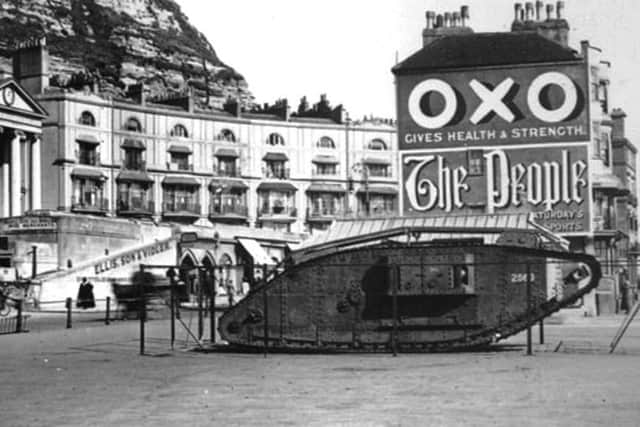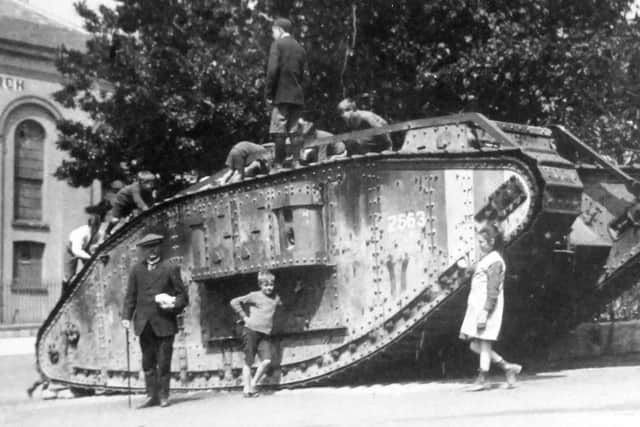When a First World War tank was an attraction on Hastings seafront
and live on Freeview channel 276
He writes: Britain is now helping Ukraine fight off the Russians by donating tanks and other military equipment to the country, but Hastings itself has had to be defended many times in past centuries.
In 1690 fears of a French invasion prompted the building of two artillery batteries on the seafront, one at the bottom of All Saints Street, the other just beyond the west end of George Street.
Advertisement
Hide AdAdvertisement
Hide AdMore fears of France led in 1760 to the replacement of these two batteries by a bigger one, with eleven large 12-pounder cannons, on the beach opposite the west end of West Street. These three batteries saw little action, and the one built in 1760 was dismantled in 1817, after the end of the Napoleonic war in 1815, and its site was cleared in 1842.


Britain and its allies beat the Russians in the Crimean War of 1853-56, and to celebrate the victory a Russian cannon captured in the war was installed in 1857 on Hastings seafront, opposite Pelham Place, at the east end of Beach Terrace. The terrace was demolished around 1930 when the seafront was being improved by the borough engineer Sidney Little, known as King Concrete. The cannon was relocated at Hastings Museum, and taken for scrap in the Second World War.
A First World War army tank was presented to Hastings by the National War Savings Committee in recognition of the services rendered by the town. It arrived by train and large crowds followed its journey to Wellington Square, where it was put on display, before moving it to a long-term site on the seafront opposite Breeds Place.
In the Second World War Hastings was in the front line of a possible German invasion, so defences of many kinds were put up in and around the town. Three gun emplacements were set up on the cliffs at Rock-a-Nore, and large concrete ‘tank traps’ were laid along parts of the seafront where tanks might come ashore. One of the tank traps is still place next to the Rock-a-Nore Miniature Railway Station, and there is a line of them west of the beach huts at West Marina.
Advertisement
Hide AdAdvertisement
Hide AdIn the war much of the seafront was made inaccessible to civilians, and large rolls of barbed wire were laid along the promenade. In mid-June 1944 Hitler started firing the new ‘doodlebugs’ – jet-propelled flying bombs - towards London. Because some of them passed over Hastings, in July five batteries of heavy anti-aircraft guns were set up, including at Grosvenor Gardens, the Oval and on the East and West Hills. The last alert was on 9 November 1944.


There are more details of these events, and many other key features of the town’s past, in my new website www.hastingshistory.net.
Have you read? New South American restaurant is a first for Hastings